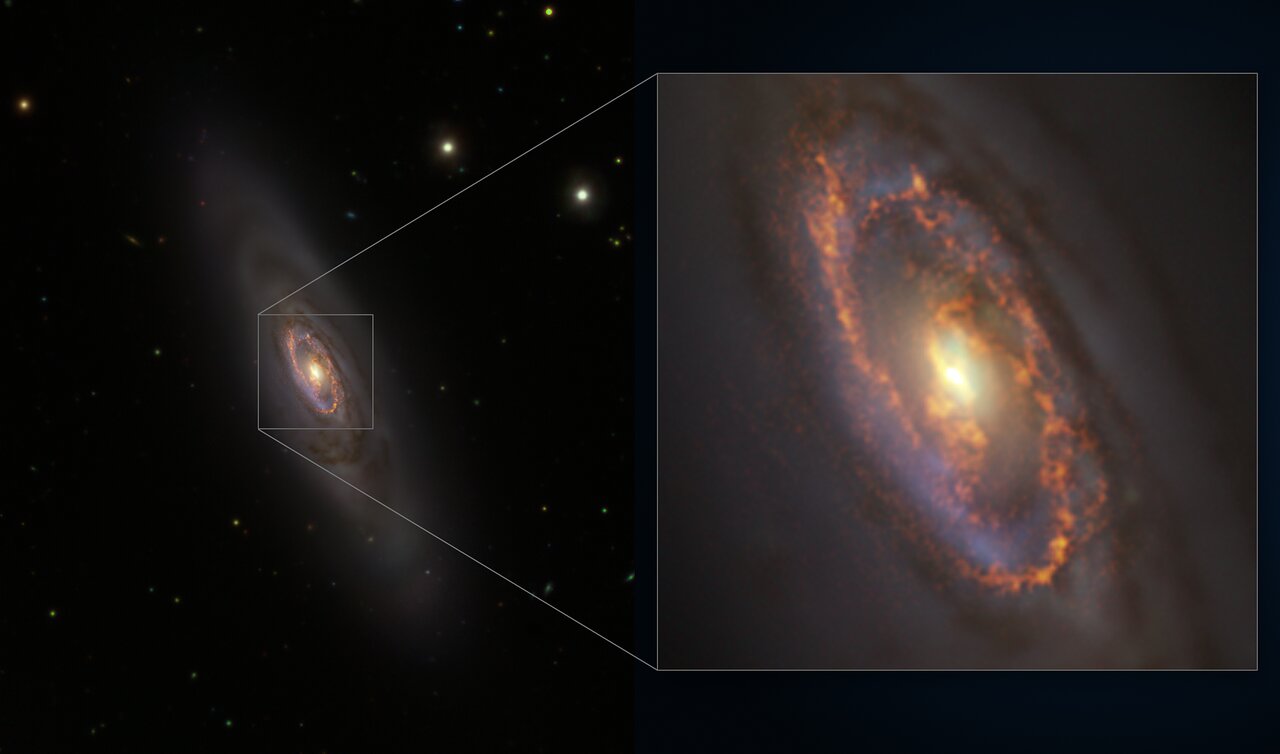Cosmos NGC 1386
Something odd is happening in NGC 1386, a spiral galaxy located 53 million light years away in the constellation Eridanus. This Picture of the Week combines data from the VLT Survey Telescope (VST), hosted at ESO’s Paranal Observatory in Chile, and the Atacama Large Millimetre/Submillimetre Array (ALMA), operated by ESO and its international partners. When astronomers observed the central regions of this galaxy, they found new stars forming… albeit in a peculiar way.
Stars often form within stellar clusters – groups of thousands of stars that originate from massive clouds of molecular gas. The blue ring at the centre of this galaxy is ripe with stellar clusters full of young stars, as seen by VST. A new study led by Almudena Prieto, an astronomer at the Instituto de Astrofísica de Canarias in Spain, used data from ESO’s Very Large Telescope (VLT) and the NASA/ESA Hubble Space Telescope to look at this ring in more detail. The data shows that all of these star clusters formed 4 million years ago, almost simultaneously. It is the first time that synchronised star formation has been observed in a galaxy that contains mostly old stars.
The same study used ALMA to reveal even more secrets in this galaxy. Shown in this picture as a golden ring are a multitude of clouds of gas, ready to form a second batch of young stars. For these to be born, though, we will still have to wait 5 million years. Even if old, NGC 1386 keeps rejuvenating itself.
